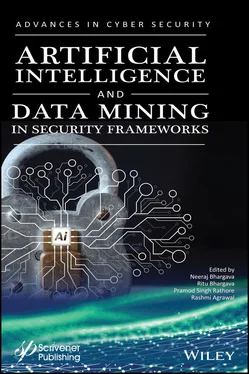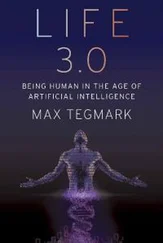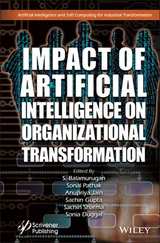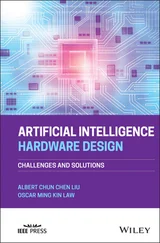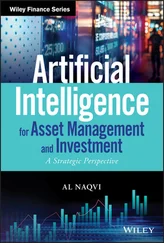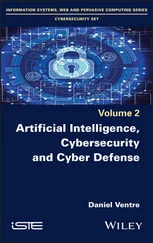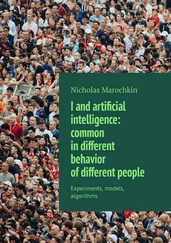Keywords : Artificial intelligence, cyber security, machine learning, Botnet
Artificial Intelligence (AI) can be characterized as artificial decision making similar to human decision making, based on certain unique algorithms and related mathematical estimations. Cyber Security relates to measures taken to protect against digital assaults in the virtual world.
Moreover, the job of AI is ever expanding in the modern world, where there is a looming threat to cyber security.
With the headway in innovation, cybercrimes are also increasing and getting unpredictable. Cyber criminals are launching sophisticated attacks that are putting current security frameworks in danger. Thus, the cyber security business is evolving to satisfy the expanding security needs of organizations. But, these defensive strategies of security professionals may not live up expectations and may fall short of its proposed agenda sooner or later [1].
1.2 Need for Artificial Intelligence
AI’s vital job is to offload work from human cyber security engineers presently, to deal with the depth and detail that humans cannot tackle effectively. Advancement in machine learning technology implies that AI applications can also automatically adapt to changes in threats and spot issues as they emerge.
Cyber security needs that AI tools and platforms can help to meet:
Data Extent
People get confused immediately when confronted with huge amounts of log information and cautions delivered by the present frameworks. Simulated intelligence programming running on today’s powerful processors can go through more data in minutes than humans could handle in months. Thus, it can also account for issues and inconsistencies while taking care of enormous volumes of security information.
Threat needles
Cyber threat hunting is a constant proactive search through networks and data sets to detect threats that elude existing computerized tools.
Digital lawbreakers are now inside numerous frameworks, waiting to complete their attacks. They can frequently escape people. But AI can quickly examine different circumstances to detect the threat needles compared to malicious activity.
Optimization of Response
Artificial intelligence can accelerate recognition of certifiable issues, quickly cross-referencing various alerts and sources of security information. The priorities of the incidents to be dealt with will still be the domain of human cyber security experts but they can be further helped by AI systems that will increase speed of recognition and reaction times.
AI arms race
Cyber criminals today are already equipped with advanced AI techniques. AI technology in general can be a boon or a bane. Programmers can easily utilize the most recent tools to launch more sophisticated attacks, each one being more dangerous. It has become an arms race where AI is the main exponent on both sides [2, 3].
1.3 Artificial Intelligence in Cyber Security
AI in cyber security supports companies or organizations, allowing them to safeguard their defense mechanisms; furthermore, it helps them to interpret cybercrimes effectively. Enterprises are using this ideal opportunity to achieve efficiency in automation by going digital as they take leverage of faster execution speeds. Achieving digital connectedness in their entire value chains helps them to meet the increasing competition in the market. On similar lines, cybercriminals find opportunity with increasing digitization. Cybercrime unions are actively focusing on digital ecosystems including cloud infrastructure, Internet of Things (IoT) devices and software as a service (SaaS) offerings. Therefore, Enterprises are confronted with the challenge of pushing for greater gains in business advantage while balancing the risk of cyber exposure [4, 5].
1.3.1 Multi-Layered Security System Design
Organizations are concentrating more on cyber security in the present scenario. This is because advanced cyber security attacks have forced them to spend a lot of money to prevent future data breaches. It begins with designing a multi-layered security framework that will secure the network infrastructure.

Figure 1.1 Network infrastructure [4].
Figure 1.1denotes the network infrastructure which contain Firewall, anti-virus software and a disaster recovery plan. All these component make a network infrastructure more efficient. AI has affected security by helping experts to recognize abnormalities in the system by analyzing client activities and contemplating the examples. Security experts would now be able to contemplate and organize information utilizing AI and detect vulnerabilities to forestall harmful attacks [6].
1.3.2 Traditional Security Approach and AI
AI will help enhance the traditional security approach in the following ways:
Advanced AI-powered security instruments will be utilized to screen and react to security events.
Modern firewalls will have built-in machine learning technology to detect and remove an unusual pattern in the system traffic, if considered hostile.
Analyzing vulnerabilities using the natural language processing feature in AI, security experts can also identify the root of a digital assault.
Predictive analysis of detecting malicious threats and scanning of the data in advance is required.
Since our reliance on big data has increased, we have created a parallel need of keeping it safe. Thus, the need of the hour is to safeguard the integrity of networks, stored data and programs from unauthorized access and attacks [7−9].
1.4 Related Work
1.4.1 Literature Review
Today the Internet is used by millions of ordinary people, making them easy targets for cyber criminals. With “softwarisation and digitization” and rapid adoption of IoT, cyber security is now at the core of business strategy. Data is a broad categorization, ranging from credit-card information, bank, financial records and personal information. The contemporary solution to this far-reaching issue lies in basic awareness, building defensive cyber-capabilities or protection and care, by education.
Onashoga, S. Adebukola, Ajayi, O. Bamidele and A. Taofik (2013) in their paper discuss simulated multi-agent-based architecture for intrusion detection system to overcome the shortcoming of the current mobile agent–based intrusion detection system. The data are distributed on both the host and the network. Closed pattern mining (CPM) algorithm is introduced for profiling the users’ activities in network database. This not only helps in reducing the time of sorting the data but also helps the analysts to know about the patterns of human behavior in real time.
Alex Roney Mathew et al . (2010) in their paper discuss the different types of cybercrime, namely: social-engineering phishing, email spoofing and pharming. They also discuss ways to protect people from such crimes with an emphasis on biometrics. Cybercrimes have lately become so prevalent in that only a very small amount of the population in the world has been untouched by them [1].
Selvakani, Maheshwari V. and Karavanisundari (2010) in their paper stress the fact that information technology can be used for destructive as well as constructive work, depending on whose hands it ends up in. The study deals with the importance of cyber laws to protect the interests of the cyber victims. The authors believe that a computer can be secured even by a person with simple knowledge but that the ascertainment and preservation of the evidence is a tough task. There is a need for techno-legal harmonized law; a good combination is required. AI should help in designing a strong law which can be used effectively to trace cybercrimes.
Читать дальше
